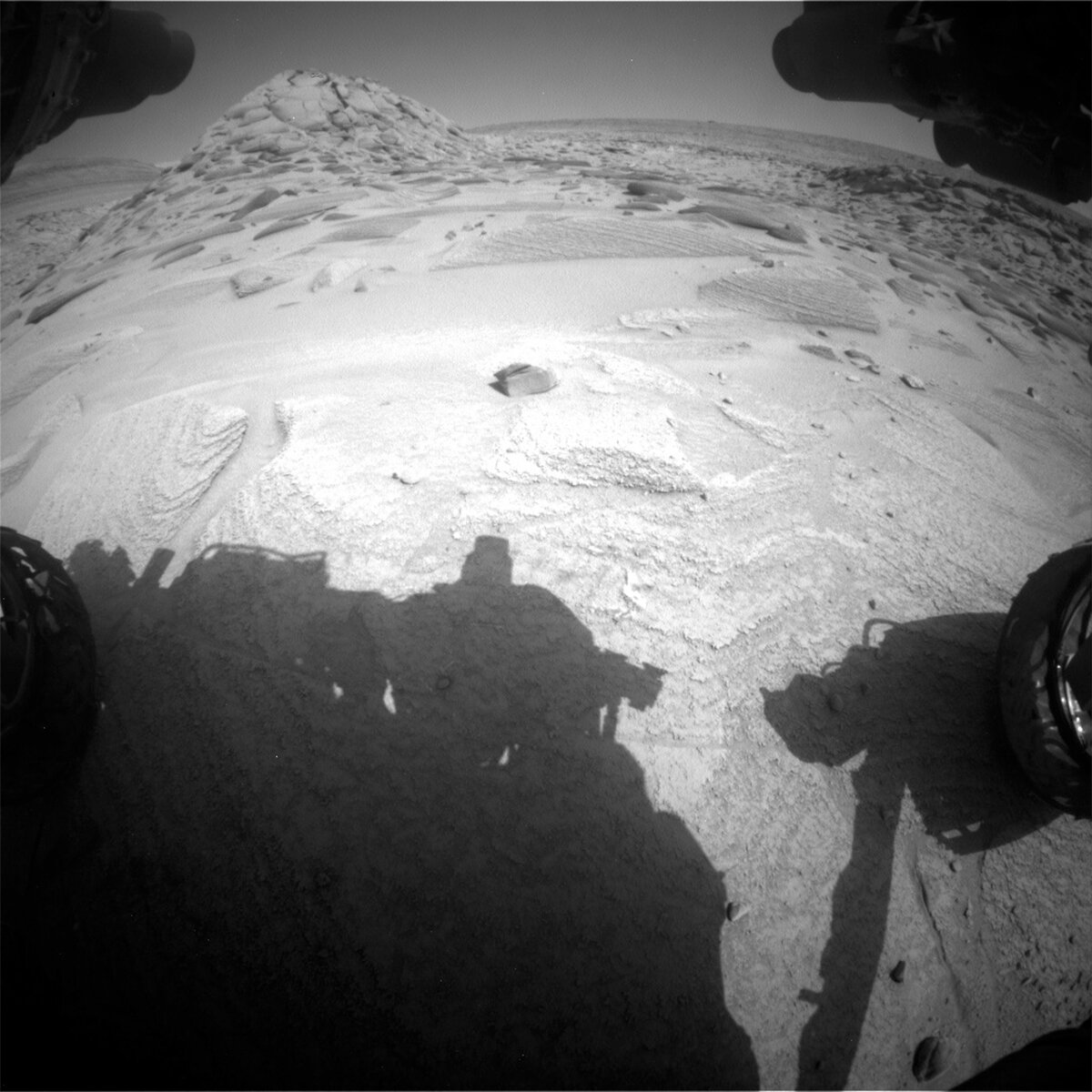Our Tapo Caparo drill campaign is officially concluded and our wheels are turning again! Specifically, we're back on the strategically-created route up Aeolis Mons (aka Mount Sharp), "paving" the path as we go. As a personal habit, when we leave a distinct area I like to look back at the road behind and all we've accomplished along the way. So, a quick sentimental summary... we drove our wheels up on the Marker Band for the first time back in November (sol 3645) ~4.5 months ago. Through a particularly cold and wet southern-California winter, the team planned: 29 drives, 5 drill attempts, 4 Mastcam 360 degree mosaics, and 61 plans sent to the rover. Today marks the beginning of Spring in Earth's northern hemisphere and the end of our Marker Band traverse saga. A fortuitous synchronicity for sure.
Today we found ourselves in front of a single, grey float rock in the workspace we then named after a river in the Amazonas in Brazil: "Rio Urubu." Without an obvious DRT-able spot on the underlying bedrock, the science team focused their main efforts on characterizing the float rock since it looked fairly dust-free. In order of science events - we'll start with an APXS short integration on Rio Urubu, ChemCam following up with a 5-spot LIBS raster, Mastcam taking a single-frame multispectral, and finally MAHLI performing a full-suite of images at different distances (25 cm - 5 cm stereo - 2 cm close approach). For a ~15 cm float block on Mars, Rio Urubu is going to get a lot of attention from us Earthlings "aliens'! In addition to our Rio Urubu analysis, we're also planning ~60 stereo Mastcam images of the surrounding terrain and a ~20 meter drive further south. A classic, "split touch and go" plan for Curiosity (where we "split" the arm activities around the remote science activities before driving in the afternoon).
While we didn't have a flat enough bedrock surface for DRT today, we did get two DRT targets last Friday and the MAHLI images were available on Earth this morning. Check out our close approach images, which ended up being 0.6 cm from "San Rafael" and 1.2 cm from "San Francisco de Yuruani" after we cleared the dust with our DRT. That's a frame height of ~2 cm - better than holding a magnifying glass and looking at it in person!
Written by Natalie Moore
from NASA Mars Rover Curiosity: Mission Updates https://ift.tt/pckAqRL

Comments
Post a Comment